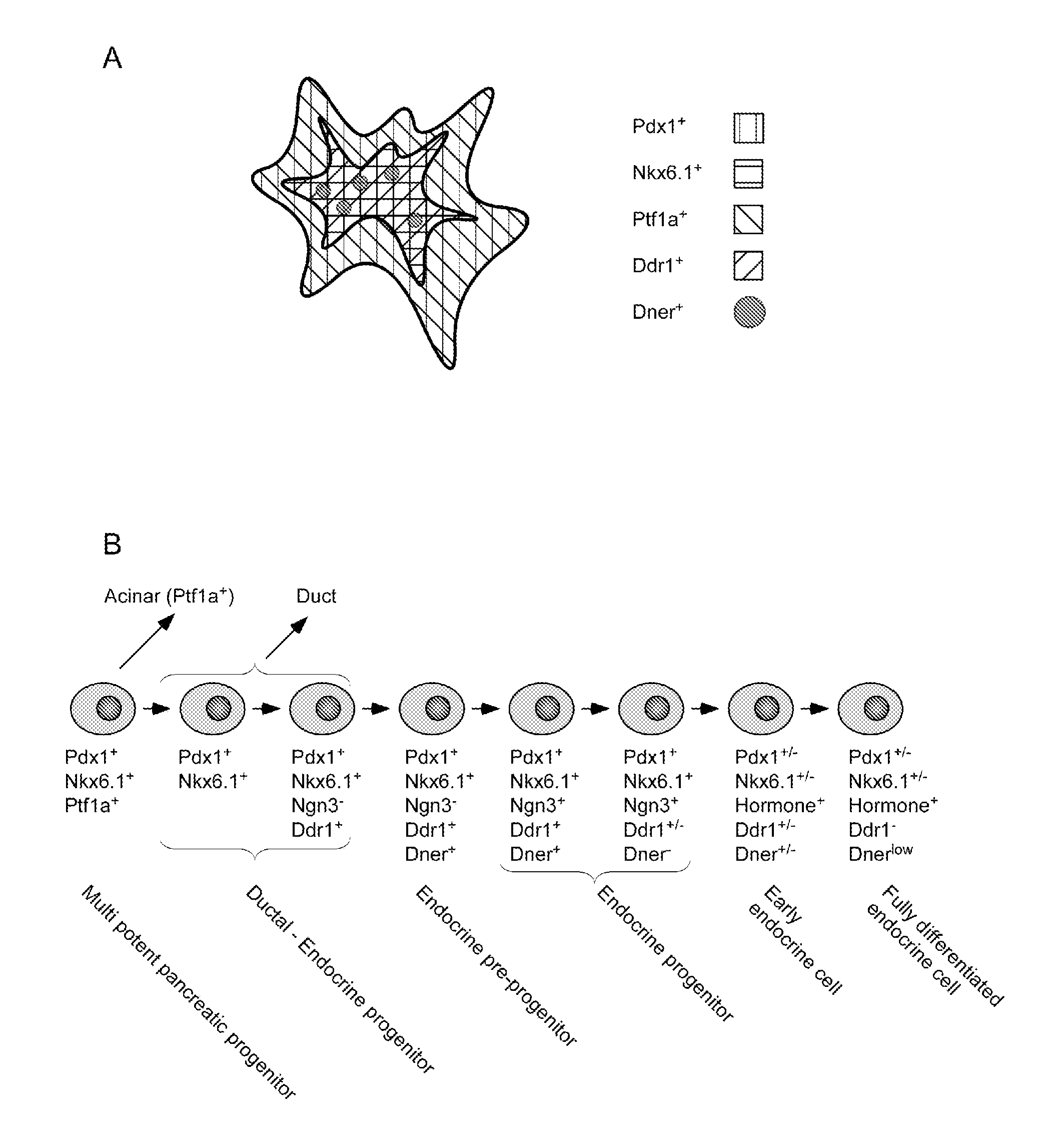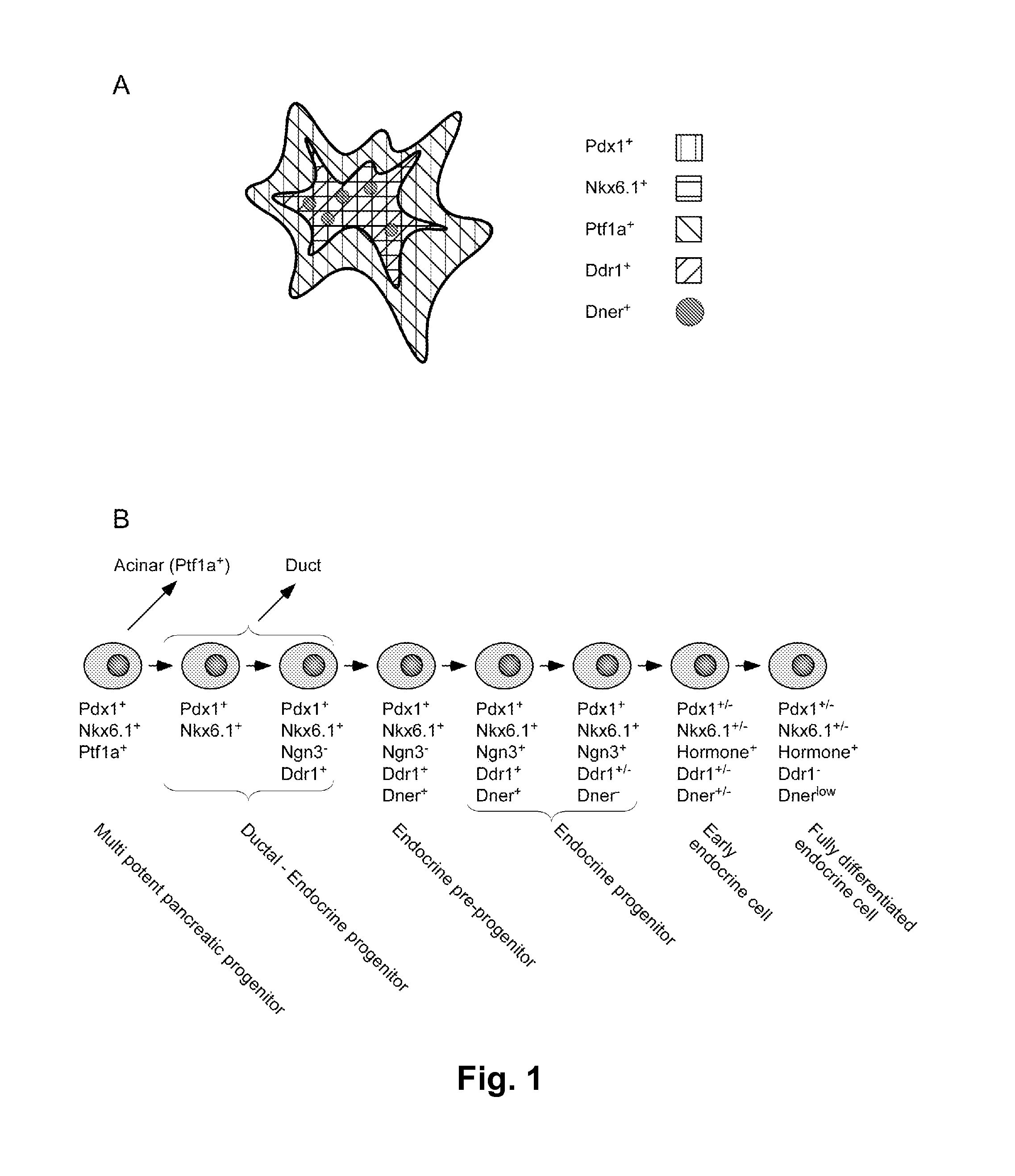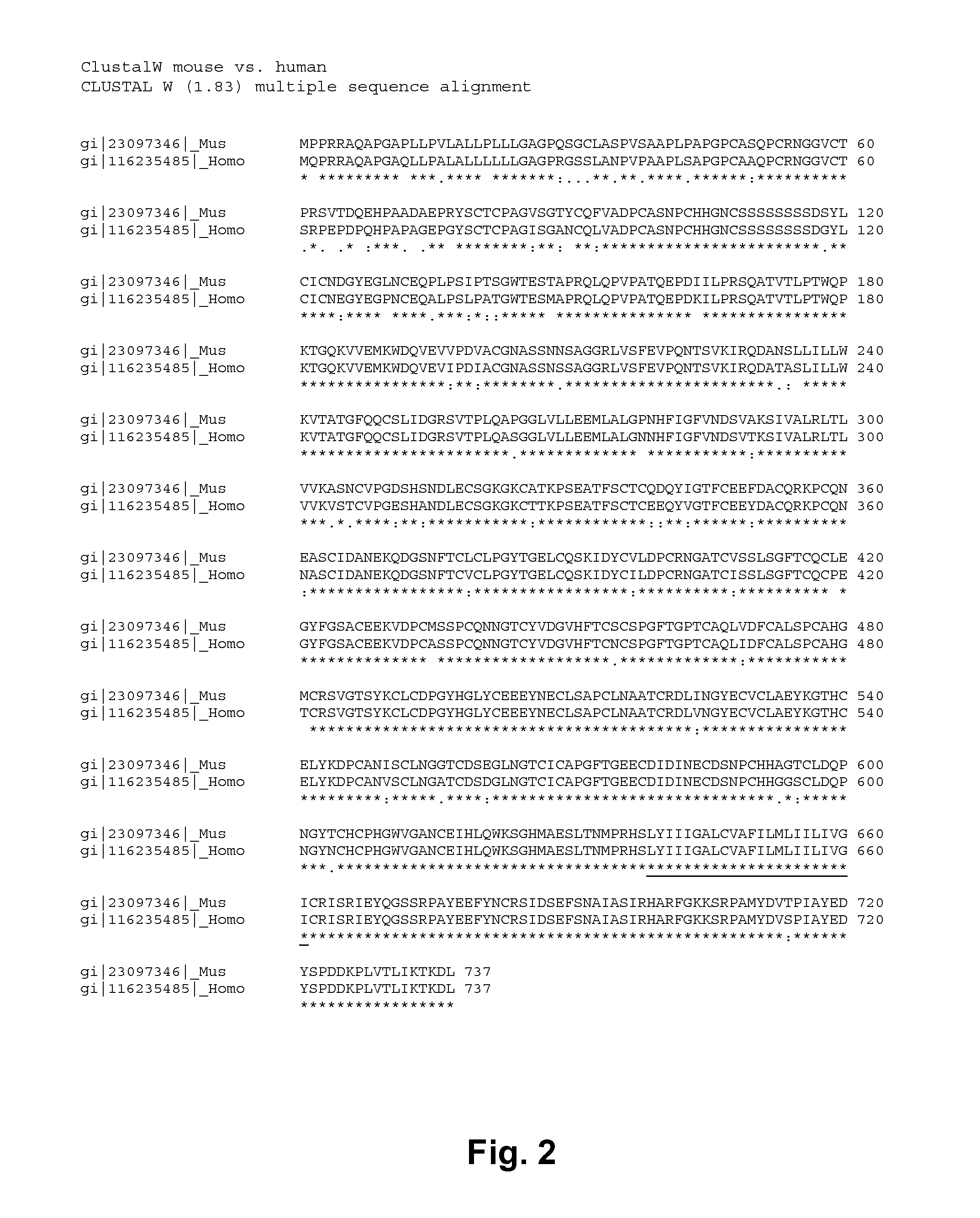Dner-mediated cell purification of pancreatic endocrine pre-progenitor cells and their progeny
a pancreatic endocrine pre-progenitor cell and purification technology, applied in the field of selective cell surface markers, can solve the problems of insufficient development of reliable protocols for generating fully functional beta cells, inability to meet the needs of donors, and inability to meet the needs of patients, etc., to achieve the effect of facilitating cell differentiation
- Summary
- Abstract
- Description
- Claims
- Application Information
AI Technical Summary
Benefits of technology
Problems solved by technology
Method used
Image
Examples
example 1
Bioinformatic Analysis of Mouse and Human Dner
[0200]In order to find the extracellular and transmembrane domains mouse and human Dner were passed through the transmembrane predictor TMHMM Server v. 2.0 at CBS (http: / / www.cbs.dtu.dk / ). The results showed that both human and mouse Dner were predicted to be a single transmembrane protein (type I) with the main first 638 amino acids on the extracellular side in both human and mouse, and the transmembrane domain predicted to be amino acids 639-661. The transmembrane-like area predicted by TMHMM in the first part of the Dner protein is the signal peptide, which is also discussed in the results below relating to SignalP.
[0201]Mouse and human signal peptide of Dner were analyzed using the SignalP 3.0 predicting Server at CBS (http: / / www.cbs.dtu.dk / ). Mouse: Signal peptide probability: 1.000; Signal anchor probability: 0.000; Max cleavage site probability: 0.494 between positions 39 and 40. Human: Signal peptide probability: 1.000; Signal an...
example 2
Expression of Dner and Ddr1 in Pancreatic Beta Cell Lines
[0206]Total RNA was isolated from the mouse endocrine-like cells lines: Ins1, BetaHC, BetaTCtet (condition: cultured with tetracycline (+tet)), BetaTCtet (condition: cultured without tetracycline (−tet)), Min6 and AlphaTC and from e15.5 NMRI gut (stomach, duodenum, spleen, and pancreas) tissue. The cell line Ins1 is described in M Asfari et al. Endocrinology, Vol 130, 167-178. The cell line BetaHC-9 is described in Noda M et al., Diabetes, 1996 December; 45(12):1766-73. The cell line BetaTC-tet is described in Fleischer N et al., Diabetes, 1998 September; 47(9):1419-25. The cell line Min6 is described in J Miyazaki et al., Endocrinology, 1990 July; 127(1):126-32. The cell line AlphaTC is described in Powers AC et al., Diabetes, 1990 April; 39(4):406-14. Using the RNA as template random primed cDNA was made. 35 cycles of PCR was performed on these cDNAs (96° C. for 180 seconds, then (96° C. for 30 seconds, 55° C. for 30 seconds...
example 3
Expression of Dner and Ddr1 in the Endocrine-Like Cell Line, alphaTC, Visualized by IHC in Chamber Slides
[0208]AlphaTC were grown in DMEM with 1000 mg / L D-Glucose, sodium pyruvate (0.5 mM), P / S (Penicillin (10 IU / ml), streptomycin (10 μg / ml)), and 10% FCS. The cell line AlphaTC is described in Powers AC et al., Diabetes, 1990 April; 39(4):406-14. Cells were fixed in Lilliys fixative for 45 minutes and then washed in PBS and stored at +5° C. in PBS until use. Staining was done by permeabilizing cells in an ethanol gradient (starting with 70% moving to 96%, then to 99%, then again 99%, then to 96%, and finally to 70%, using 5 minutes incubation with each concentration) and subsequently blocking with 0.5% TNB blocking reagent (from Perkin-Elmer). Goat anti-Dner (R&D Systems, AF2254, 1:150) or mouse anti-Ddr1 (R&D Systems, MAB2396, 1:50) was then added and incubated overnight (O / N) at room temperature (RT). The following day cells were washed in PBS and biotinylated anti-donkey or anti...
PUM
 Login to View More
Login to View More Abstract
Description
Claims
Application Information
 Login to View More
Login to View More - R&D
- Intellectual Property
- Life Sciences
- Materials
- Tech Scout
- Unparalleled Data Quality
- Higher Quality Content
- 60% Fewer Hallucinations
Browse by: Latest US Patents, China's latest patents, Technical Efficacy Thesaurus, Application Domain, Technology Topic, Popular Technical Reports.
© 2025 PatSnap. All rights reserved.Legal|Privacy policy|Modern Slavery Act Transparency Statement|Sitemap|About US| Contact US: help@patsnap.com



